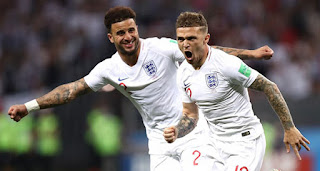MOSCOW: Red Square is steeped in history, but these days it has become the centre of the world, at least, for the FIFA World Cup.
The street, which had witnessed a plethora of activities during the WWII, is now dotted with shops, sidewalk cafes and hotels.
Just opposite the Kremlin, you’ll come across some finest brand stores and even an ice-cream parlour.
The Fan Zone, which has been put up on the middle of the street, remains the point of attraction for the kids and young fans, but the older generation prefer a sombre walk towards Vladimir Lenin’s mausoleum or gaze at some of the statues.
The tournament, in fact, has helped merge sports with history. But if one has some interest in Russia’s role in the WWII, then find some cozy space on the street and rewind the clock back to the biting cold in 1941 when Joseph Stalin delivered his famous speech to the erstwhile Soviet army just before they left for the war on November 7.
Fans from every nook and corner of the world converge here on every afternoon to exchange pleasantries, hug each and sing ‘ole ole.’
The competition has united the world, which nowadays often involves into heated arguments and engage in proxy wars.
So, it’s great to see a Mexican fan hug two beautiful Russian ladies right across the majestic Kremlin or Tunisians pose for a memorable picture with their Spanish counterparts under the monument of Georgy Zhukov -- Russia and erstwhile Soviet Union’s most decorated general, who played a key role in the defeat of Nazi Germany.
Close to the city’s iconic Saint Basil’s Cathedral, a German veteran was engaged in ball-control skills with his grandchildren. In fact, he too wanted to be a part of this beautiful moment.
So were the two Spanish young girls, who cooled themselves on a sunny afternoon with ice-cream cones while marvelled the Kremlin’s red wall.
The tournament is significant in many ways as the FIFA competition has brought the entire world to a place, which can claim the best advert for peace. (www.footballwallah.blogspot.com)
The street, which had witnessed a plethora of activities during the WWII, is now dotted with shops, sidewalk cafes and hotels.
Just opposite the Kremlin, you’ll come across some finest brand stores and even an ice-cream parlour.
The Fan Zone, which has been put up on the middle of the street, remains the point of attraction for the kids and young fans, but the older generation prefer a sombre walk towards Vladimir Lenin’s mausoleum or gaze at some of the statues.
The tournament, in fact, has helped merge sports with history. But if one has some interest in Russia’s role in the WWII, then find some cozy space on the street and rewind the clock back to the biting cold in 1941 when Joseph Stalin delivered his famous speech to the erstwhile Soviet army just before they left for the war on November 7.
Fans from every nook and corner of the world converge here on every afternoon to exchange pleasantries, hug each and sing ‘ole ole.’
The competition has united the world, which nowadays often involves into heated arguments and engage in proxy wars.
So, it’s great to see a Mexican fan hug two beautiful Russian ladies right across the majestic Kremlin or Tunisians pose for a memorable picture with their Spanish counterparts under the monument of Georgy Zhukov -- Russia and erstwhile Soviet Union’s most decorated general, who played a key role in the defeat of Nazi Germany.
Close to the city’s iconic Saint Basil’s Cathedral, a German veteran was engaged in ball-control skills with his grandchildren. In fact, he too wanted to be a part of this beautiful moment.
So were the two Spanish young girls, who cooled themselves on a sunny afternoon with ice-cream cones while marvelled the Kremlin’s red wall.
The tournament is significant in many ways as the FIFA competition has brought the entire world to a place, which can claim the best advert for peace. (www.footballwallah.blogspot.com)









